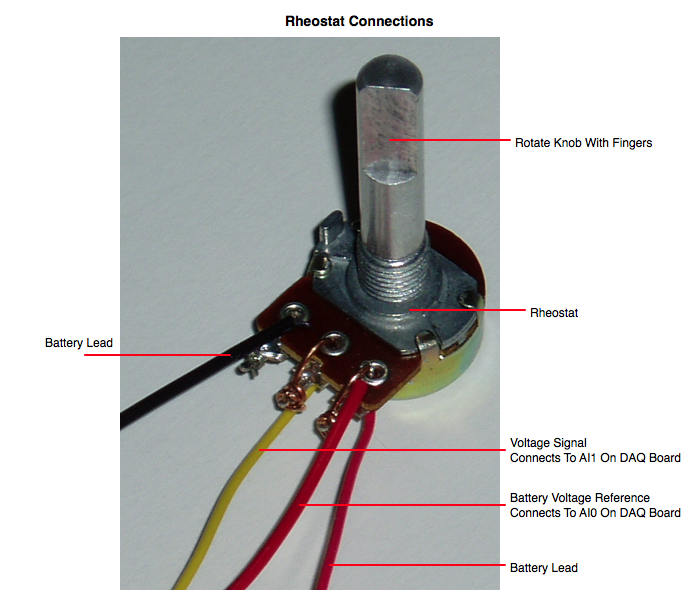
DAQ Plot ► Tutorials ► Rheostat
A rheostat is a device that changes resistance. Using Ohms Law and keeping the current constant you find that by changing resistance the electricity will change in voltage. Thus a rheostat can be used to change the voltage of electricity that flows through it.
You can buy a rheostat, also called a Potentiometer, at an electronics shop like Radio Shack. I used one called a Audio Taper/1Meg Ohm potentiometer. A typical rheostat is diagrammed below.

The actual rheostat I used is wired as in this picture:

The following diagram shows how the rheostat is hooked to the DAQ device.

By turning the rheostat knob you change the voltage and thus change the value of the curve shown on the DAQ Plot graph.
How does a rheostat work? A segment of wire resists the flow of electrons through it. If you double the wire length then you double the resistance. A rheostat has wire coiled around a donut piece of plastic inside it so that a long piece of wire can fit in it. Each end of the wire is connected to the outside connectors of the rheostat. There is also a movable dial, just like on a clock, inside the rheostat that revolves around and touches the wire inside. That dial is connected to the middle connector on the outside of the rheostat. By changing the dial location you change the length of the wire from one end to the dial. By changing the length you change the resistance and hence the voltage from one outside connector to the middle connector. The best thing to do is to take apart the rheostat and see for yourself.